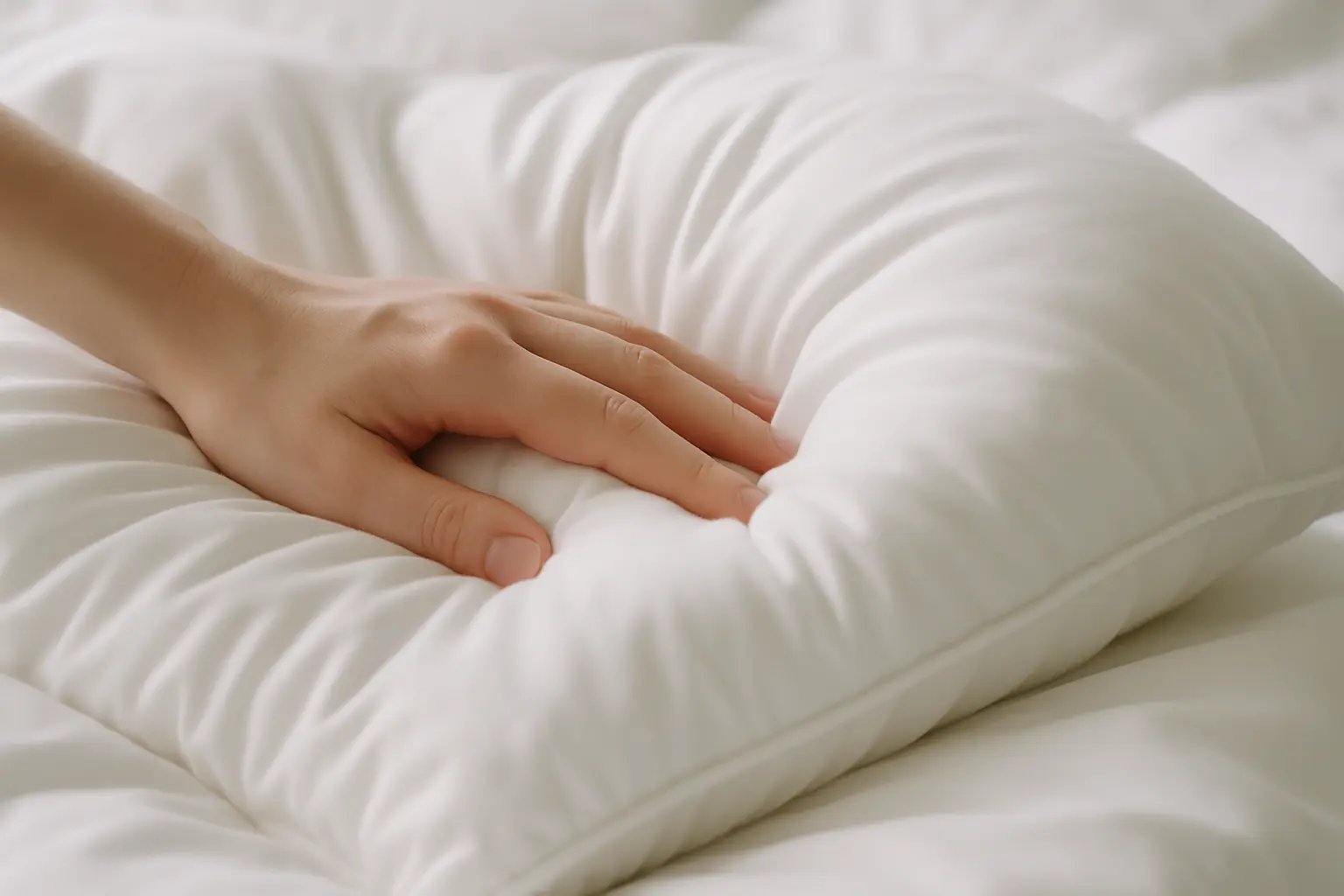When shopping for bedding like comforters, duvets, and pillows, you might encounter terms such as 0.9D, 3D, 7D, or even 15D in product descriptions. These numbers refer to the Denier (D) of the synthetic fibers used as filling, most commonly forms of polyester. But what do these numbers mean, and how do they affect your sleep experience? Let’s explore the differences.
What Is Denier?
Denier (D) is a unit of measurement that describes the thickness or fineness of an individual fiber.
- Definition: Denier is the mass in grams per 9,000 meters of the fiber.
- Rule: The lower the denier number, the finer, softer, and often more flexible the fiber; the higher the denier number, the thicker, stronger, and generally firmer the fiber.
- Microfiber Note: Technically, a fiber with a denier of less than 1 is classified as a “microfiber” due to its extreme fineness.
Common Denier Levels and Their Features
0.9D (Ultra-fine Microfiber)
- Feel: Extremely soft, silky, and fluffy—closely mimics the feel of high-quality natural down. Often used as a premium down alternative.
- Warmth: Excellent warmth retention due to high loft (fluffiness) and its ability to trap air efficiently in tiny pockets.
- Weight: Very lightweight.
- Best for: Luxury down-alternative comforters, premium pillows, high-end mattress toppers, baby bedding.
- Pros: Hypoallergenic, easy care, gentle on skin, excellent drape.
3D (Fine Polyester Fiber)
- Feel: Soft and comfortable, providing a pleasant plushness, though slightly less silky and fine than 0.9D microfiber.
- Warmth: Good insulation, still offers good loft and lightness.
- Weight: Lightweight, but slightly more substantial than 0.9D.
- Best for: Mid-range comforters, everyday pillows, quilts, and mattress pads.
- Pros: Good balance of softness, warmth, durability, and value.
7D (Standard Polyester Fiber)
- Feel: Noticeably thicker and somewhat firmer; less fluffy and conforming than lower denier fibers.
- Warmth: Provides adequate warmth, but due to thicker fibers creating larger air pockets, its warmth-to-weight ratio might be slightly lower than finer fibers. Can feel more solid.
- Weight: Heavier and bulkier compared to 0.9D and 3D.
- Best for: Economical bedding (budget comforters and pillows), decorative cushions, upholstery padding, and some mattress pads.
- Pros: Durable, holds its shape well, resilient, affordable.
15D and Above (Coarse Polyester Fiber)
- Feel: Thick, firm, and relatively coarse compared to finer bedding fibers. Offers structure rather than plushness.
- Warmth: Less effective at trapping air due to the very thick fibers and larger gaps, resulting in lower insulation for its weight.
- Weight: Much heavier and bulkier.
- Best for: Fill for firm cushions, upholstery stuffing, pet beds, stuffed toys, or products where structural support and firmness are prioritized over softness.
- Pros: Very durable, maintains structure under pressure, low cost.
Comparison Table
| Denier | Softness | Fluffiness/Loft | Warmth Efficiency* | Weight | Common Use |
|---|---|---|---|---|---|
| 0.9D | ★★★★★ (Silky) | ★★★★★ | ★★★★★ | ★ (Very Light) | Luxury comforters, premium pillows |
| 3D | ★★★★ (Soft) | ★★★★ | ★★★★ | ★★ (Light) | Standard bedding, quilts, mid-range pillows |
| 7D | ★★ (Firmish) | ★★ | ★★ | ★★★★ (Medium) | Budget bedding, cushions, basic pads |
| 15D+ | ★ (Firm/Coarse) | ★ | ★ | ★★★★★ (Heavy) | Firm cushions, upholstery fill, toys |
*Warmth Efficiency refers to the insulation provided relative to the weight and loft. Note on Weight: More stars indicate a heavier fiber/bulkier fill.
How to Choose?
- For Maximum Softness, Loft, and Down-Like Luxury: Choose fillings primarily made with 0.9D microfiber. 3D offers a good balance if seeking softness with slightly more substance. These are excellent down alternatives, often preferred for hypoallergenic properties and ease of care.
- For Everyday Comfort and Good Value: 3D fiber provides a great blend of softness, warmth, and durability for standard bedding.
- For Economy, Durability, or Moderate Firmness: 7D fiber is a suitable choice for budget-friendly items or where resilience is needed more than plushness.
- For Firm Support or Structural Fill: Higher denier fibers (15D+) are best suited for applications requiring firmness and shape retention, like supportive cushions or upholstery.
Summary
Denier is a crucial factor determining the feel, warmth efficiency, and weight of synthetic bedding fillings, typically made from polyester. Lower denier fibers (especially 0.9D microfiber) offer superior softness, loft, and lightweight warmth, effectively mimicking down. Higher denier fibers provide increasing levels of firmness, durability, and structure at a lower cost but sacrifice softness and insulation efficiency. Understanding these differences helps you select bedding that best matches your personal comfort preferences, needs, and budget.


Leave a Reply